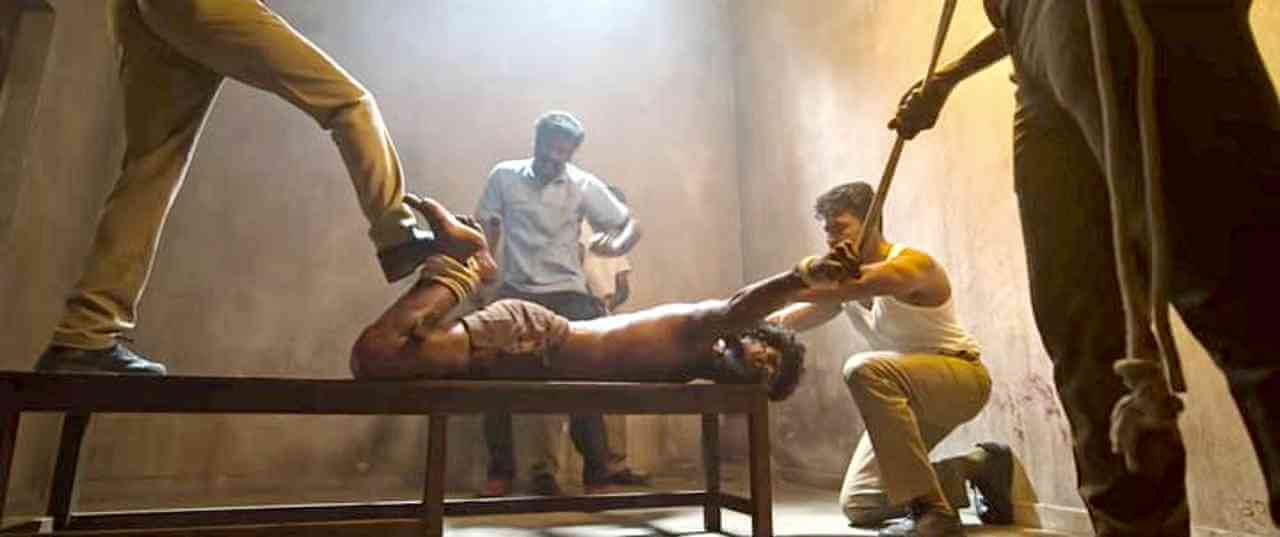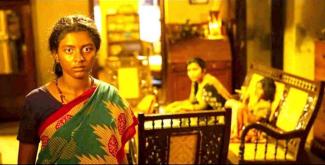“In order to uphold democracy, there will be times one must be authoritarian.”
These are the remarks of a police officer in T. J. Gnanavel’s film Jai Bhim, not mine. It is not really a fictional remark – we hear such remarks from real life police officers, administrators, even journalists, fairly often. We live in a world where reality anticipates satire and kills its punchline.
Jai Bhim is an adaptation of a true 1993 legal case, where Justice Chandru, then an advocate-activist, had filed a habeas corpus case on behalf of an adivasi woman whose husband had been wrongfully accused in a jewellery case and had gone “missing” in police custody.
Jai Bhim is both a courtroom drama and a mystery drama. It begins with a scene at the jail entrance and takes us on a journey through the horrors of custodial torture and sexual assault.
The 1993 case which inspired the film involved Parvathi from the Kurava tribe. The film version brings us Senggeni from the Irula tribe. In the real case, Parvathi’s husband Rajakannu, his brother, sister, and brother-in-law were arrested and brutally beaten by the Kammapuram (TN) police, forcing them under custodial torture to confess to a theft they did not commit. When Parvathi learnt about their arrest, she approached the police, and she too was tortured by the police, along with her son, who died a year later as a result of the trauma that the police inflicted on him. Later, with the help of a communist activist, she approached Justice Chandru, then a lawyer, who filed a habeas corpus case in court on her behalf demanding that the police account for her husband who “went missing” from their custody. Habeas corpus (the Latin phrase means “produce the body”) cases demand that a missing person be produced in court.
The case exposed the actual nature of custody, abuse, as well as a slew of horrible truths about police violence that should have no place in any democracy. Despite the fact that the film does not depict all of the facts surrounding the case, it brings us face to face with state violence and custodial torture deriving from caste, and the psychological trauma and physical agony it inflicts not only on its direct victims but on their kin.
Many of the film's moments are heartbreaking. Scenes in which a vicious police officer totures Senggeni's husband transport us to the real world. The film reminds us that places like police stations can turn into places of torture if you are poor and socially or economically vulnerable; if you are a Kashmiri, a Muslim, a Dalit, a woman; or a person who challenges state policies. It gives us a sense of how the whole mechanism of the state can turn against you if you are from a marginalised community.
The film also shows how adivasi communities such as the Irula live. The camera shows us the beauty of the land they inhabit – and show how they are forced to make a living by working on other people's land. A song in the film describes Irulas as the defenders and keepers of forests and wildlife, threatened by the violence that calls itself “development”.
When questioned why he opted to change the Seggeni's tribe from Kurava to Irula, the director of Jai Bhim replied because they are considerably more underprivileged than Kurava. The film tells us how denotified tribes like the Irula are dehumanised by profiling them as crooks and criminals. When such communities have been systematically barred from basic rights like voting, ration cards, and gaining land rights, we are forced to ask what will happen to the hundreds of people who like the Irula have no documentary proof of their existence or their possession of land, if regulations such as CAA-NPR-NRC are implemented.
Despite the presence of prominent actors such as Surya, Prakash Raj, Lijomol Jose, as well as a compelling story, the film falls short in persuading the viewer to feel Senggeni's anguish and fight alongside her. I also question the film's triumphant ending. Yes, in real life, Parvathi won the court case; but did that change the reality of the systemically violent nature of the state apparatus? Many Senggenis continue to face the same atrocities even today.
In the struggles waged by Senggeni and Chandru, in the educating, organising and agitating we see them do, we can, if we wish, locate Marx and Ambedkar. That is the strength of the film.












